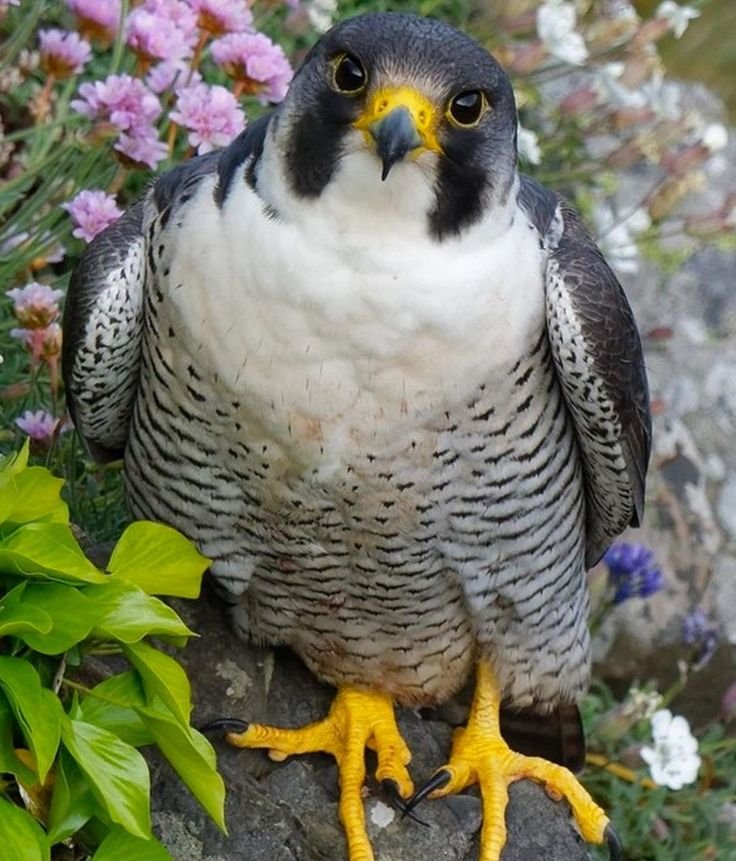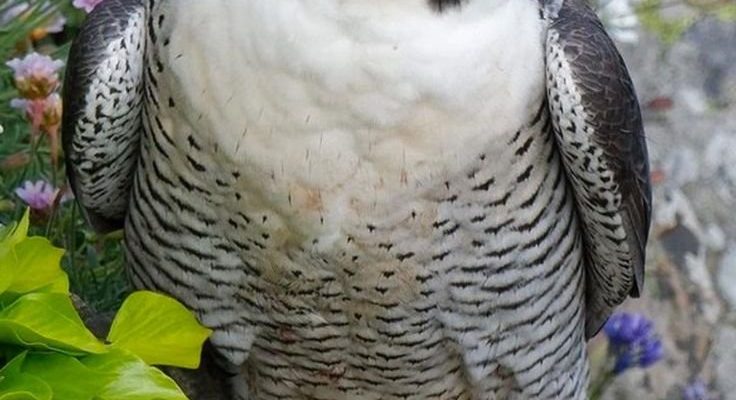
These awe-inspiring birds of prey are known for their breathtaking dives, reaching speeds of over 240 miles per hour, making them the fastest animals on the planet. With their sharp talons and keen eyesight, they’re perfectly built to hunt and survive in the wild. Here’s the thing: the Peregrine Falcon rarely interacts with humans in a harmful way. So, can they actually be dangerous to people? Let’s dig deeper and find out.
Understanding the Peregrine Falcon’s Nature
Peregrine Falcons thrive around the globe, except for extreme polar regions and some isolated islands. With their striking slate-gray feathers, distinctive mustache-like sideburns, and astonishing hunting abilities, they capture the imagination of many nature enthusiasts. More than just their looks, it’s their behavior that often makes people curious about whether they could be a threat to humans.
These birds are primarily *carnivorous*, feasting mainly on smaller birds like pigeons and songbirds. They are not aggressive toward larger animals, including humans. In fact, most encounters are peaceful. However, when they feel threatened—especially during nesting season—Peregrine Falcons have been documented performing dive-bombings on perceived intruders. This is often more of a warning sign than a genuine attack.
When Do Peregrine Falcons Fly Close to Humans?
Most of the time, Peregrine Falcons prefer to keep their distance from human activity. However, they are often spotted in urban areas, hunting the abundant pigeon population. It’s in these settings that you might wonder if they could become dangerous. But don’t worry! When they glide overhead, they’re just doing their job and aren’t out to get you.
If you happen to be near their nesting sites, it’s wise to respect their space. They might see you as a threat to their young and react defensively. You might even observe mating pairs that take a fierce stance if an intruder approaches their nest. The best approach is to admire these magnificent creatures from a distance, allowing them to thrive without interference.
Are Peregrine Falcons Aggressive Toward Humans?
While they can exhibit aggression when protecting their nests, it’s certainly not the norm for Peregrine Falcons to target humans. Instead, their behavior is a protective instinct. Just think of it like a parent bear protecting its cubs. They want to ensure their young survive and will assert themselves if they feel threatened.
Most interactions between humans and Peregrine Falcons are non-confrontational. In fact, many falconers work with these birds and form strong bonds through training. This gives a unique perspective on their nature as they are not inherently aggressive. You might even find them fascinating to observe in the wild without feeling threatened at all.
When Do They Display Aggressive Behavior?
Aggressive displays, such as swooping and vocalizing, often happen when their nests are endangered. For instance, if you inadvertently venture too close without realizing it, you might see a falcon dive towards you. It’s usually a way for them to scare you off and protect their territory rather than an outright attack. The same concept applies to many wild animals; defense is often mistaken for aggression.
If you see one of these magnificent birds behaving aggressively, it’s best to keep your distance. Moving away will typically resolve the situation, allowing the falcon to return to its normal behavior.
How Dangerous Are Peregrine Falcons Compared to Other Birds of Prey?
When you stack Peregrine Falcons against other birds of prey, they don’t rank high on the danger scale when it comes to interactions with humans. Birds like eagles and hawks are often larger and more powerful, so they can pose a greater risk due to sheer size and strength. However, it’s critical to remember that the majority of these birds are also not inclined to attack unless they feel threatened.
Most raptors have a similar instinct to defend their nests. Yet, their interactions with humans generally don’t lead to harm. In fact, many people enjoy birdwatching and are often in close proximity to these breathtaking creatures without any issues.
So, while a Peregrine Falcon’s mighty dive may seem intimidating, its threat level to humans is quite low. It’s fascinating how nature works; while these birds are some of the best hunters in the animal kingdom, they’re not interested in human encounters.
The Role of Conservation in Protecting Humans and Falcons
Conservation efforts over the years have helped protect Peregrine Falcons, allowing their populations to recover after facing near extinction in the mid-20th century. Initiatives focused on clean habitats, food sources, and safe nesting sites have fostered healthier interactions between falcons and humans. As humans increasingly encroach on their territories, it’s vital to respect the balance of nature.
By ensuring that these majestic birds have the necessary protections, we not only help them thrive but also minimize the chances of confrontations. Observing falcons in their natural habitat can be an enlightening experience, especially when we respect their space and appreciate their role in the ecosystem.
So, can the Peregrine Falcon be dangerous to humans? While they can display protective behaviors, the answer is a resounding no for the most part. They are magnificent creatures with a vital role in maintaining the balance of our ecosystems. Understanding their behaviors and respecting their space ensures that interactions remain safe and enjoyable.
Next time you spot one soaring through the sky, consider the beauty of these incredible birds rather than any fear. After all, they’re just doing their thing—hunting and thriving in their world. Let’s appreciate them from a distance, marveling at their speed and grace without worrying about danger. Nature has its way of balancing itself, and us humans are simply part of that equation.

